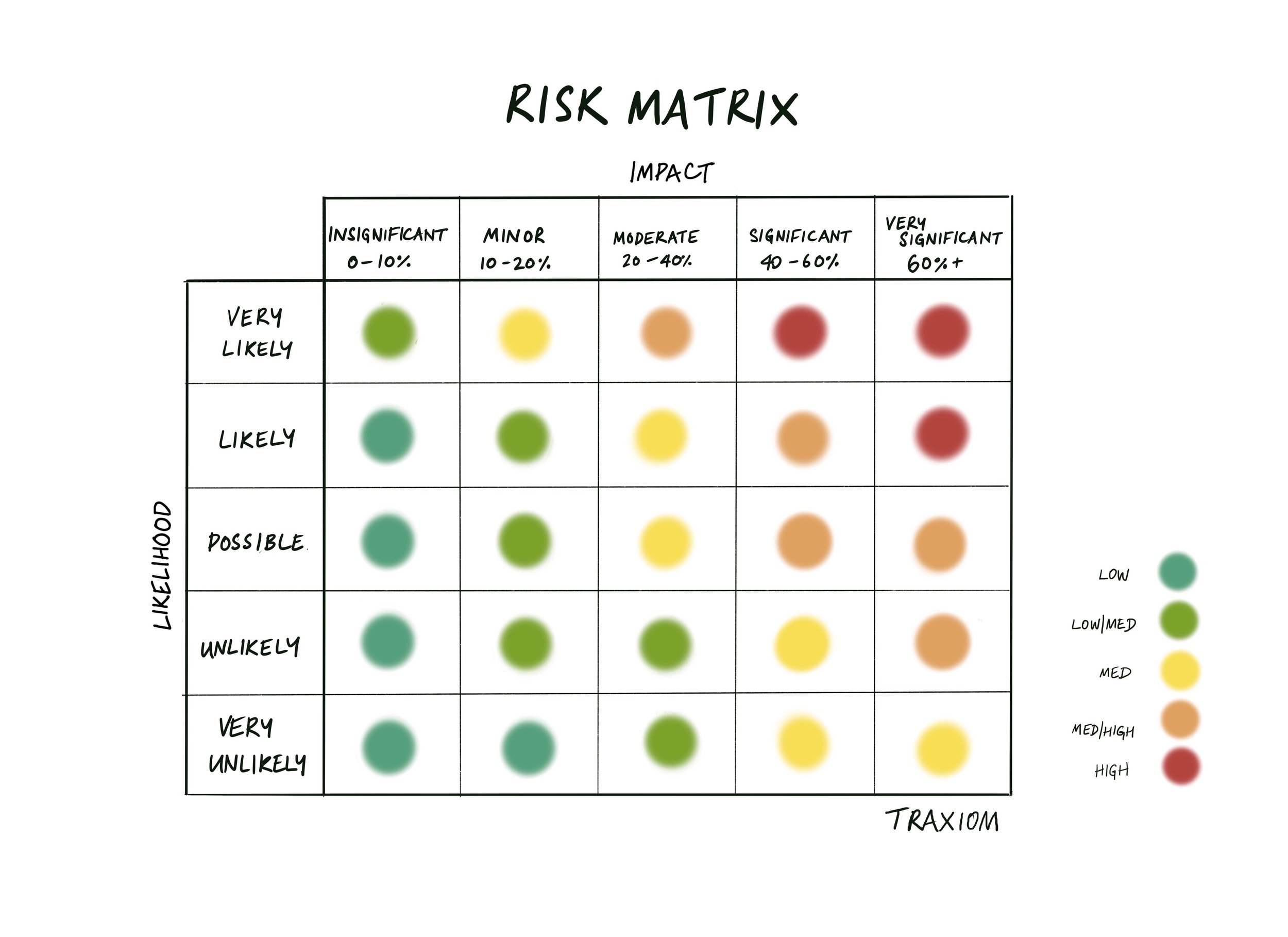Risk Matrix
The ‘Risk Matrix’ tool is designed to help put risks into perspective by balancing the likelihood and severity of the impact of any future course of action. Every person has a different level of tolerance to risk. Some people are natural risk takers, others are more risk averse. Some people are naturally more considered by nature and are strong at identifying risks and assessing the impact before responding. Whilst others are more likely to move into action. This tool can support people who have a different way of seeing things and/or operating to share perspectives.
The Risk Matrix is a visual tool that can support conversations about the likelihood and severity of a risk so that we can get on the same page, play to our strengths, and stop us all from ‘overdoing’ it. The tool can be used as a personal reflection or in groups. You can print a paper copy, use an electronic version in a presentation, or draw it up on a whiteboard to support workshops or team meetings. There will likely be a range of risks, so each risk is to be evaluated separately.
How to use it
Likelihood – Consider the likelihood that this risk may occur. Is it very likely that this risk will occur, or very unlikely? Be mindful of the natural state for every person who is part of the conversation. Are you naturally a more optimistic person or are you more likely to be sceptical. It’s important to have a balanced view. Too much optimism can make you blind to risks. Too much pessimism can stop you from considering opportunities.
Impact – Evaluate the possible impact of this risk if it occurs. Will it have an insignificant impact or will it be severe? Make sure you consider both the short-term and long-term nature of this impact, as well as how hard it will be to unravel the negative impact. Often you can afford to take faster action if you can unwind this impact faster or its severity is lower.
Response – Identify the overall risk of this undertaking. Is this low risk or high risk? If the risk is low, we can afford to move to action faster than if the risk is higher. Our ‘fast responder’ colleagues can lead the way forward if it’s lower risk, and our ‘deeply considered’ colleagues can support a more thorough assessment if the risks are higher.
Want to take it further?
At Traxiom, we believe the ripple effect of our actions can be wider and felt more deeply than we can fathom. A large part of what we do is support people to realise the true value that each person brings and to understand the impact this might have on others. Although the ‘Risk Matrix’ tool can be used as a personal reflection, we think it’s best used to support conversations to get on the same page. If you’d like another perspective, we’d love to support you in taking a deeper look.


